Co Loa Citadel
Being a cultural heritage, a testament to the creativity and technical skills of the old Vietnamese, Co Loa Citadel is definitely an ideal tourist destination that visitors cannot ignore when visiting Hanoi.
Overview
About 16 kilometers north of Hanoi Old Quarter, visitors can explore one of Vietnam's most significant historical sites - Co Loa Citadel.
Located in Co Loa Commune, Dong Anh District, on the outskirts of Hanoi, this citadel is regarded as a cultural cornerstone for both Hanoi City and Vietnam as a whole. The site is intertwined with many legends of the Vietnamese people, including King An Duong Vuong's construction of the citadel and establishment of the national capital, the enchanted crossbow of Kim Quy, and the poignant tale of My Chau and Trong Thuy.
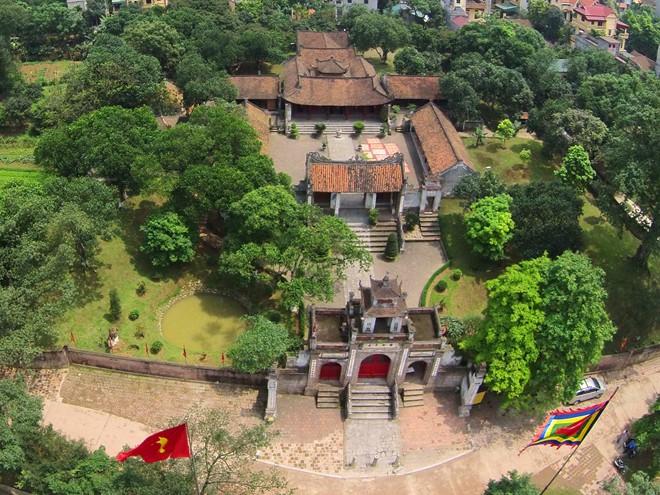 Photo: haufo.hanoi.gov.vn
Photo: haufo.hanoi.gov.vn
Constructed during the early days of Vietnamese civilization, Co Loa Citadel has witnessed the glorious journey of the Vietnamese people while preserving the country's unique cultural heritage since ancient times. The citadel is also a testament to the creativity and technical prowess of the Vietnamese from long ago.
Co Loa Citadel is an ideal destination for those interested in exploring thousands of years of Vietnamese culture and the architectural brilliance of Vietnam. Additionally, visitors can delve into Vietnam's history from its primitive origins as well as legendary narratives that have shaped the nation.
History
Co Loa Citadel is recognized as the oldest construction in Vietnam, steeped in historical narratives and folklore.
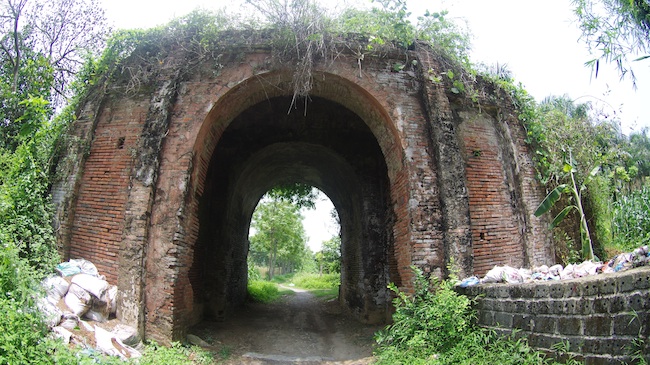 Photo: motogo.vn
Photo: motogo.vn
Dating back to the 3rd century B.C., An Duong Vuong established the Au Lac Kingdom and selected Co Loa as the nation's capital. Over a millennium later, during the Dai Viet Kingdom, General Ngo Quyen - famous for ending a thousand years of Chinese domination in 938, also chose Co Loa as his capital. This site protects a wealth of archaeological relics that illustrate the Vietnamese people's continuous journey through history. Through the exploration of Co Loa Citadel, archaeologists have uncovered a wealth of information about the Dong Son culture, also called the Red River civilization, from prehistoric Vietnam.
Structure of the Citadel
Co Loa Citadel was built in a spiral design. According to legend, the citadel originally had nine walls; however, archaeological studies have revealed only three main walls remaining.
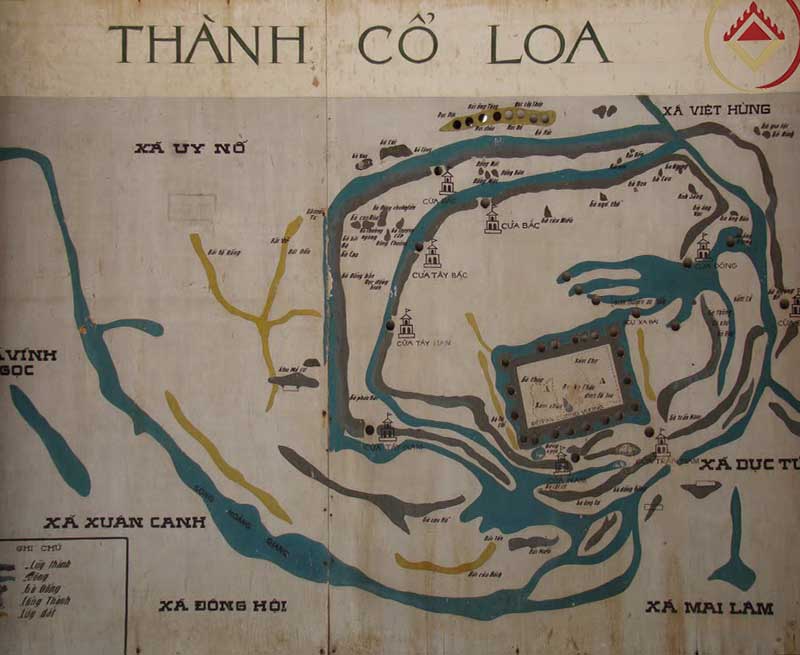
The Outer Wall (Thanh Ngoai) has a circumference of approximately 8 kilometers and reaches an average height of 4-5 meters, fashioned by digging the earth while creating moats.
The Middle Wall (Thanh Trung) is structurally similar to the Outer Wall but features a narrower and more robust area, with a circumference of about 6.5 kilometers.
The Central Wall (Thanh Noi) was home to the king and certain mandarins, thus its smaller circumference of around 1.65 kilometers. Later, structures such as An Duong Vuong Temple and the Temple of My Chau Princess were erected in this area.
What to See in Co Loa Citadel
An Duong Vuong Temple (Thuong Temple)
During a visit to Co Loa Citadel, An Duong Vuong Temple is a must-visit site for tourists. Situated on an ancient hill that once housed the king’s palace, this temple was constructed in 1687 during the reign of King Le Hi Tong and restored in 1893.
%20.jpg) Photo: laodongthudo.vn
Photo: laodongthudo.vn
In front of the temple stands a stone carved with two intricately designed dragons, which has become a hallmark of the sculpture art from the Le Dynasty. In a large lake directly in front of the temple lies Ngoc well - the site where Trong Thuy ended his life according to legend.
Inside the temple, visitors can find several artifacts, including bronze statues of An Duong Vuong, a statue of a white horse, a pink horse, along with other bronze and porcelain items.
Co Loa Communal House
This communal house, relocated and built at the end of the 18th century, serves as a hub for social gatherings and community events, established by King Thuc Phan.
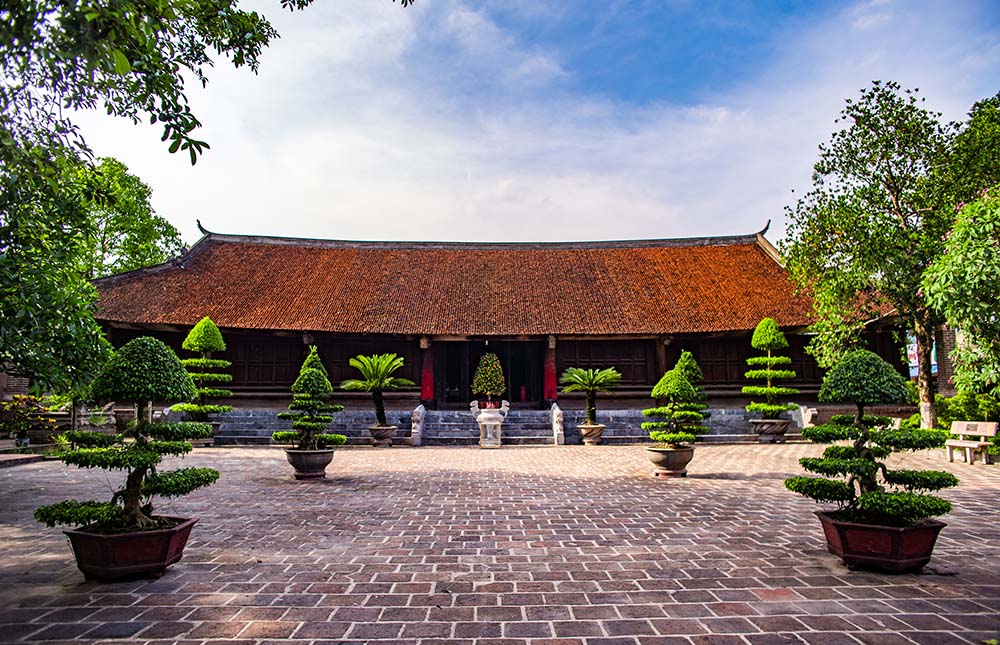 Photo: thanhcoloa.vn
Photo: thanhcoloa.vn
The entrance of the house features carved depictions of the four sacred creatures of Vietnam (dragon, unicorn, turtle, and phoenix) along with four symbolic flowers (peach, chrysanthemum, bamboo, and apricot). The craftsmanship of these sculptures, intricately carved and gilded, never fails to astonish visitors.
With its robust and impressive architecture, this communal house offers a glimpse into artifacts carrying substantial historical value that have persisted through the ages.
Temple of My Chau Princess
Known as the tomb of Princess My Chau, this temple features a natural stone called My Chau stone, which is shaped like a headless person. According to legend, after her demise, My Chau transformed into a large stone that floated to Duong Cam, located to the east of Co Loa Citadel. The townspeople transported the stone back with a hammock, but it fell at the base of a banyan tree, where the temple was subsequently constructed.
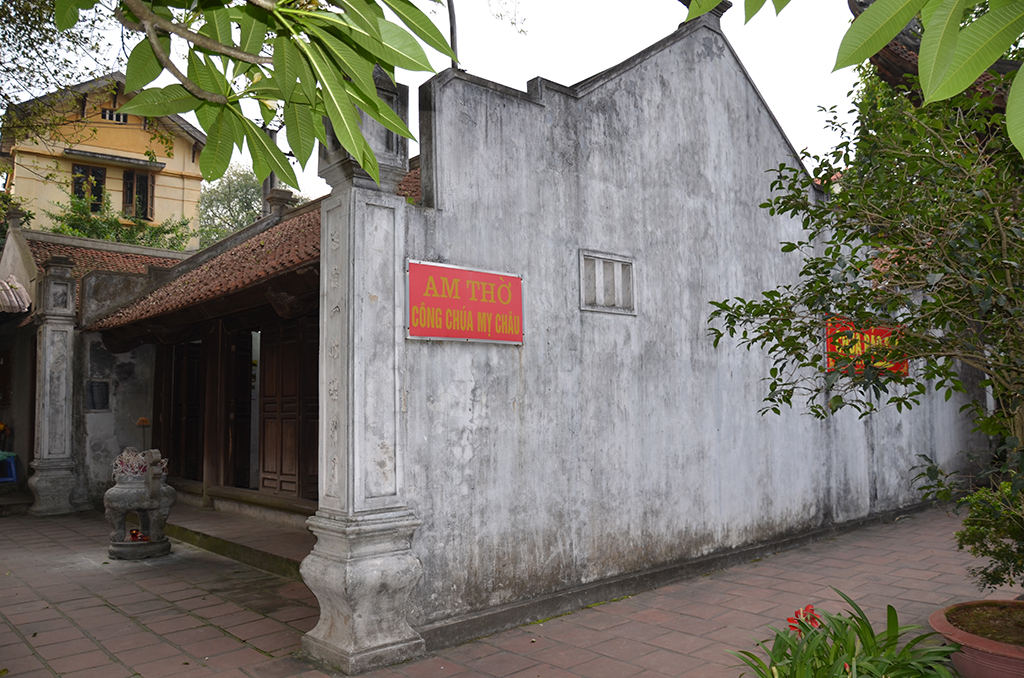 Photo: thanhcoloa.vn
Photo: thanhcoloa.vn
Additionally, the walls of the temple feature a horizontal lacquered board inscribed with a poem in Chinese characters by poet Chu Manh Trinh. This site, marked by the legend of My Chau stone, remains a point of curiosity for many visitors.
Cao Lo Temple
This temple honors Cao Lo, an esteemed general during King Thuc Phan's dynasty, who invented the Lien Chau crossbow and oversaw the construction of Co Loa Citadel. To commemorate his invaluable contributions to the nation, the temple was built in his honor. A statue of Cao Lo with crossbows stands prominently in the middle of the lake in front of the temple.
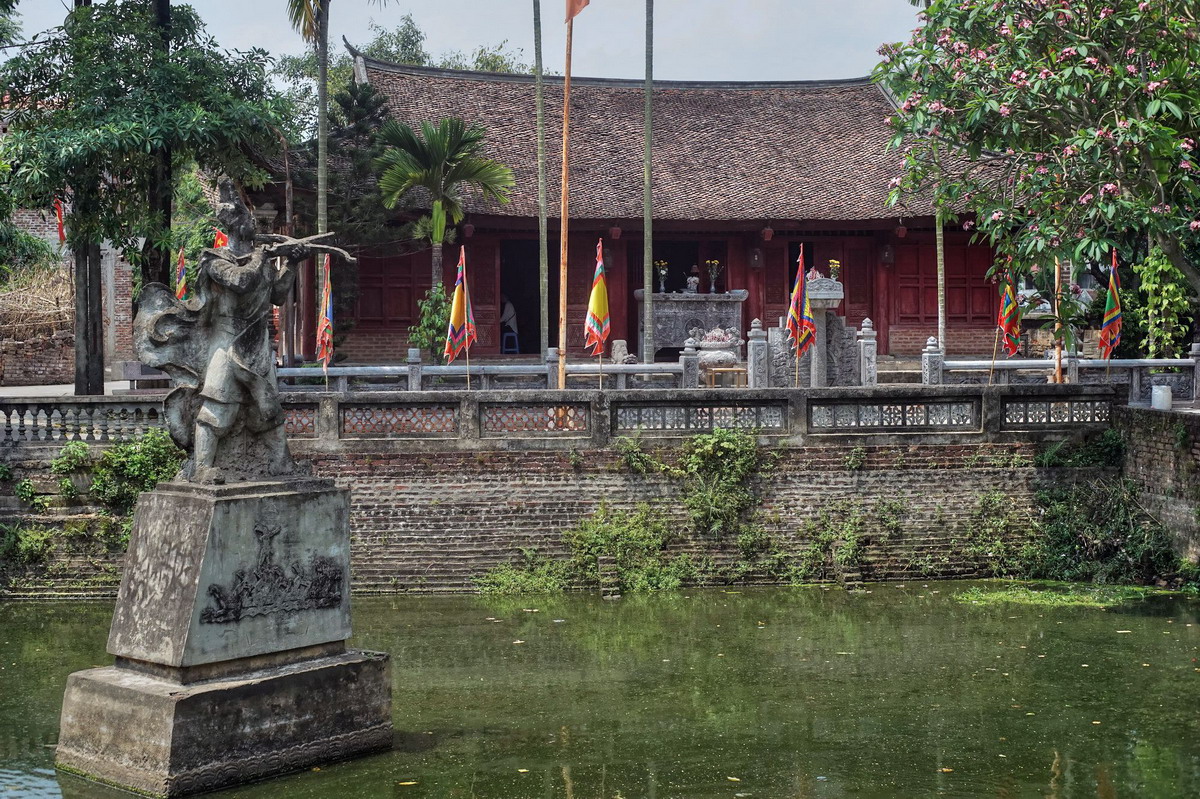 Photo: baotintuc.vn
Photo: baotintuc.vn
When exploring Co Loa Citadel, Cao Lo Temple is a significant destination for visitors wishing to pay tribute to this brilliant and talented general.
Best Time to Visit
For those seeking a festive atmosphere and a deep dive into Vietnamese culture and customs, the ideal time to visit Co Loa Citadel is on the 6th day of the lunar month of January, during the Co Loa festival. This vibrant celebration features a variety of activities including processions, liturgies, and unique folk games.
However, if you prefer a quieter experience focused on appreciating the remarkable architecture of the citadel and the stories associated with it, it’s advisable to avoid the festival day and weekends due to the large crowds.
How to Get There
Located on the outskirts of Hanoi, Co Loa Citadel is a captivating destination for visitors eager to explore Vietnamese culture and history.
Situated about 15 kilometers from the Hanoi Old Quarter, you can reach the citadel by motorbike or car. The best route is to follow Highway 1A, cross the Duong River bridge, and turn left from Yen Vien Town onto Highway No. 3, continuing approximately 5 kilometers to the citadel.
Alternatively, to save on travel costs, visitors can take a bus to Co Loa Citadel. Bus No. 46 departs from My Dinh area, while Bus No. 15 and Bus No. 17 leave from Long Bien transit station.
Useful Information
- Location: Co Loa, Dong Anh, Hanoi
- Best for: All visitors
- Entrance: N/A
- Hours: Day time visit is recommended
- Distance to city center: 10.4km (6.5 mi)
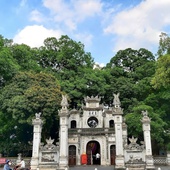
Quan Thanh Temple
Located on Thanh Nien Street, Quan Thanh Ward, Ba Dinh District, Hanoi, Quan Thanh Temple is a Taoist temple and known as one of Hanoi’s four sacred temples which were built to worship four protectors in four directions.
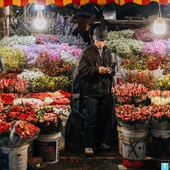
Quang Ba Flower Market
Without the normal hustle and bustle of normal markets, Quang Ba Flower Market is charming in its own way.

Phu Tay Ho
About 4 kilometers to the west of the Hanoi center, Phu Tay Ho lies on the quiet and peaceful peninsula of ancient Nghi Tam village, West Lake, Quang An ward, Tay Ho district.








